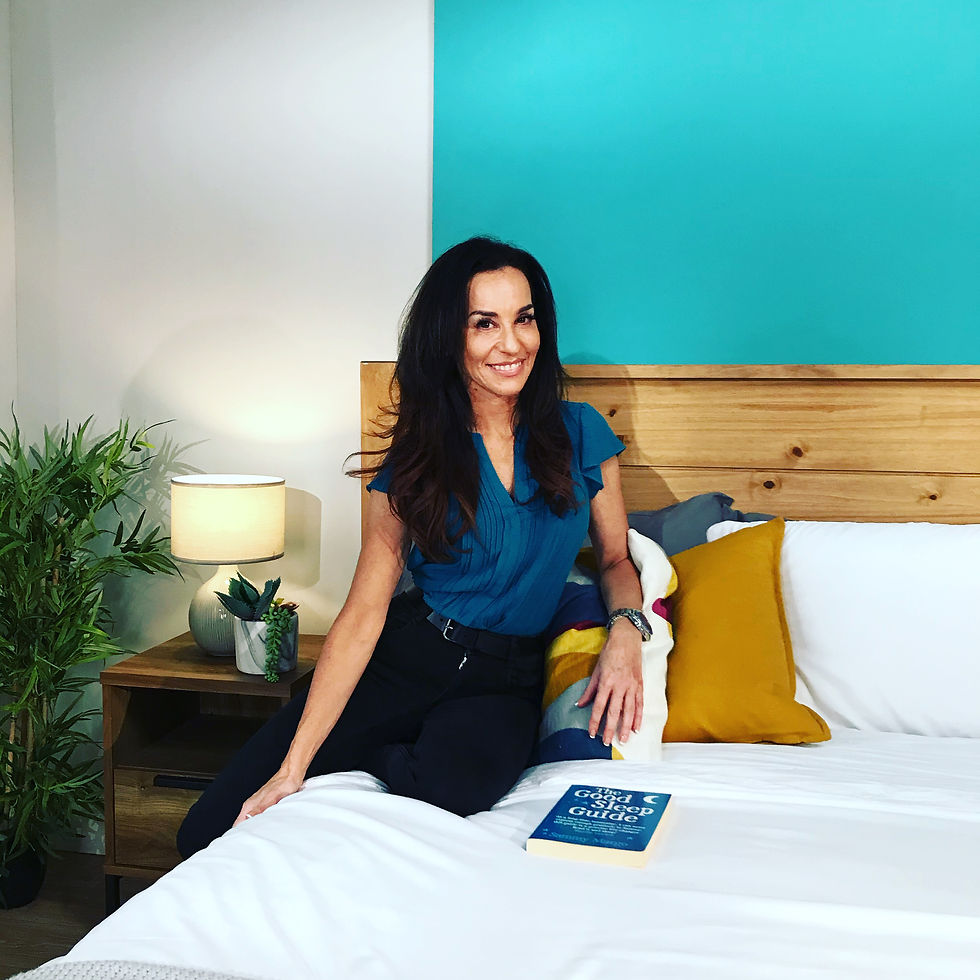Winter Sleep During Lockdown
- sammymargo
- Jan 9, 2021
- 4 min read
WINTER SLEEP TIPS DURING LOCKDOWN

By Sammy Margo, sleep expert for Sleepeezee and author of The Good Sleep Guide.
Winter during lockdown can leave us feeling sluggish and low. The shift in temperature darkness and lockdown will affect our sleep patterns. Chartered physiotherapist, sleep expert for Sleepeezee and author of The Good Sleep Guide, Sammy Margo, shares her practical tips for getting a good night’s sleep during these challenging times.
Keep it cool
While its tempting during these winter months to turn up the radiator, central heating can leave us feeling dehydrated and overheated, both of which can impact your sleep. It is better to use a higher tog duvet, ideally 10.5 tog or above as getting too hot is a barrier to getting deep restorative sleep.
According to the National Sleep Foundation research (1), a cool room was one of the most important factors in getting a good night’s sleep with as many as four out of five respondents saying this was important to them. Ideally, your bedroom should be 16 to 18 degrees centigrade, thereby helping to optimise the release of your sleepy hormone melatonin.
Keep it bright
A lack of sunlight exposure can lead to Seasonal Affective Disorder (SAD) at this time of year which can make us feel low and sluggish. There is a wealth of research about the effects of light on our body rhythm, sleep patterns and mood from the Journal of Psychosomatic Research (2). Morning exposure to daylight has been linked to good sleep and research as shown that those who were exposed to more daylight during the morning hours experienced better sleep, fell asleep more quickly and had less sleep disturbance.
Think about how you can fit this into your daily routine. Make a point of having a morning stroll, instead of using the car. If you are short of time then why not combine that with another task, like taking the kids to school or having a phone call with your work colleague while out walking.
The Perfect Sleep Position
Just like sitting at your desk is a posture, so is sleeping. Many people overlook the bed itself and simply focus on changing their bedtime routine and sleep patterns. Even if you think you’re sleeping fine, there’s a chance that you’ve just become slowly accustomed to a less-than-excellent sleeping experience.
While there is no strict rule about when to replace a mattress, research by the Sleep Council (3) says that if your mattress is more than eight years old it would have deteriorated by up to 70% and will be hindering you rather than helping you to achieve the best night’s sleep. Because of the gradual degradation and softening of a mattress’s materials, it loses its ability to provide crucial support for vulnerable areas like your neck, low back, and hips.
It’s important to look for a mattress that can support pressure points and keep your spine properly aligned in various positions as you sleep. Maintain good spine and body posture while you sleep with specialised mattresses designed to give proper support for the body.
Rhythm and Routine
Humans love rhythm and routine (4). Try to stick to the same rhythm and routine to get the best out of your sleep. As humans our bodies love going to bed and waking up at the same time every day. It seems so simple but not always so easy to do in practice. Set aside time in your day for a bedtime routine and try to wake up at the same time every day, even on the weekend.
Digital detox
As the body’s biological clock works in rhythms set by the amount of light and dark the body is exposed to, it’s vital to rethink when we use technology. Research (5) has shown that exposure to blue light from iPad screens, computers and phones has an impact on the production of your sleepy hormone melatonin. This therefore has a huge impact on your sleep.
Given 2020 has been the year where digital became a lifeline, what with ZOOM, TEAMS and other social platforms replacing face-to-face contact, it is even more important to give your body a chance to reset before bedtime. So, make sure that you have a digital cut-off time one to two hours before you go to bed as this will allow time for your blue light exposure to settle.

Try a power nap
It’s natural that we feel an energy low during the day and a power nap is a great way to get over this. Many cultures have this built into their routines. Research (Good sleep, bad sleep! The role of daytime naps in healthy adults by R. Dhand)(6), has shown that naps can reduce sleepiness and improve cognitive performance.
The best time to do this is between 1pm and 3pm each afternoon. Keeping it short is key. The benefits of a brief 10 to 15 min nap are almost immediate. They say it equates to giving you as much energy as two cups of strong coffee, but with better longer lasting effects. Thirty minutes is however long enough to put you in a deep sleep and leave you feeling groggy when you wake. So, where possible try to make this a habit, and if you just can’t, lie down and zone out for 15 minutes.
Research sources:
https://www.sleepfoundation.org/bedroom-environment/best-temperature-for-sleep
https://www.sciencedirect.com/science/article/abs/pii/002239999490037X?via%3Dihub
https://sleepcouncil.org.uk/latest-news/your-sleep-in-numbers-2/
https://www.nigms.nih.gov/education/fact-sheets/Pages/circadian-rhythms.aspx
https://www.livescience.com/53874-blue-lightsleep.html#:~:text=Research%20has%20found%20that%20exposure%20to%20blue%20light,is%20more%20sensitive%20to%20this%20type%20of%20light
https://pubmed.ncbi.nlm.nih.gov/21075238/ and https://pubmed.ncbi.nlm.nih.gov/17053484/



























Comments